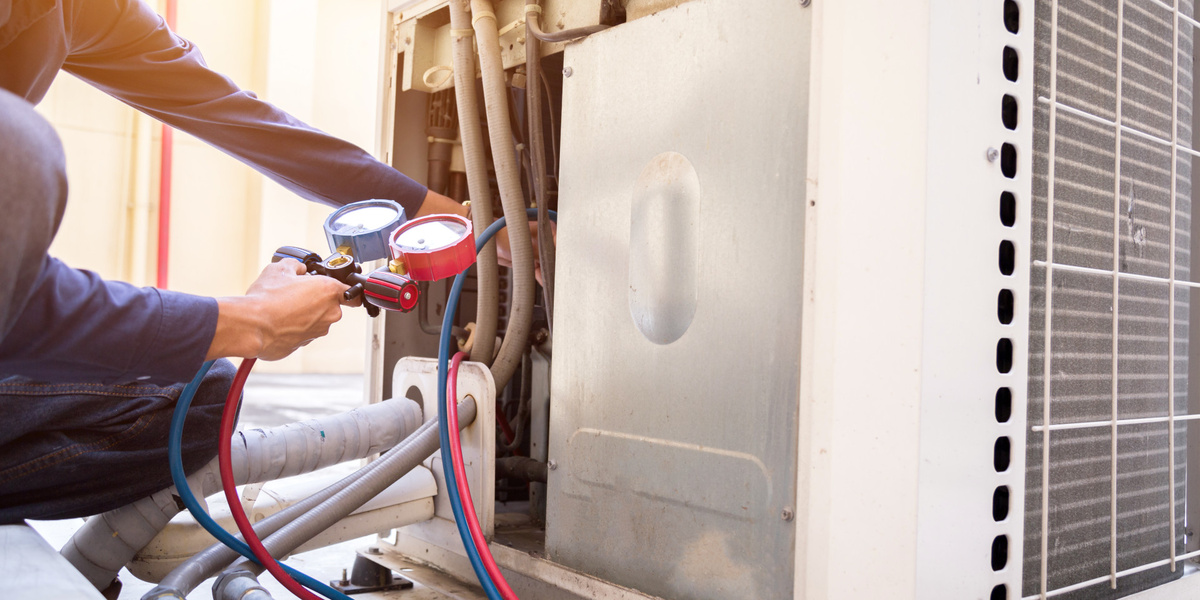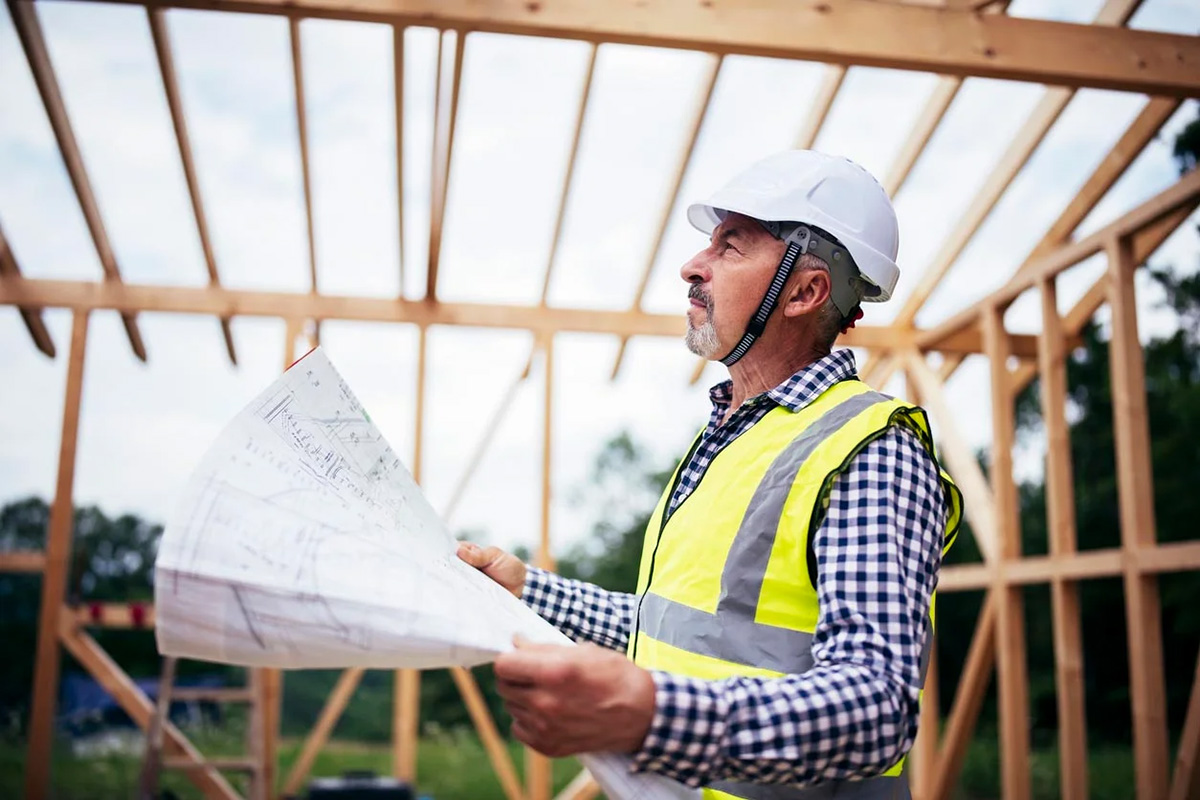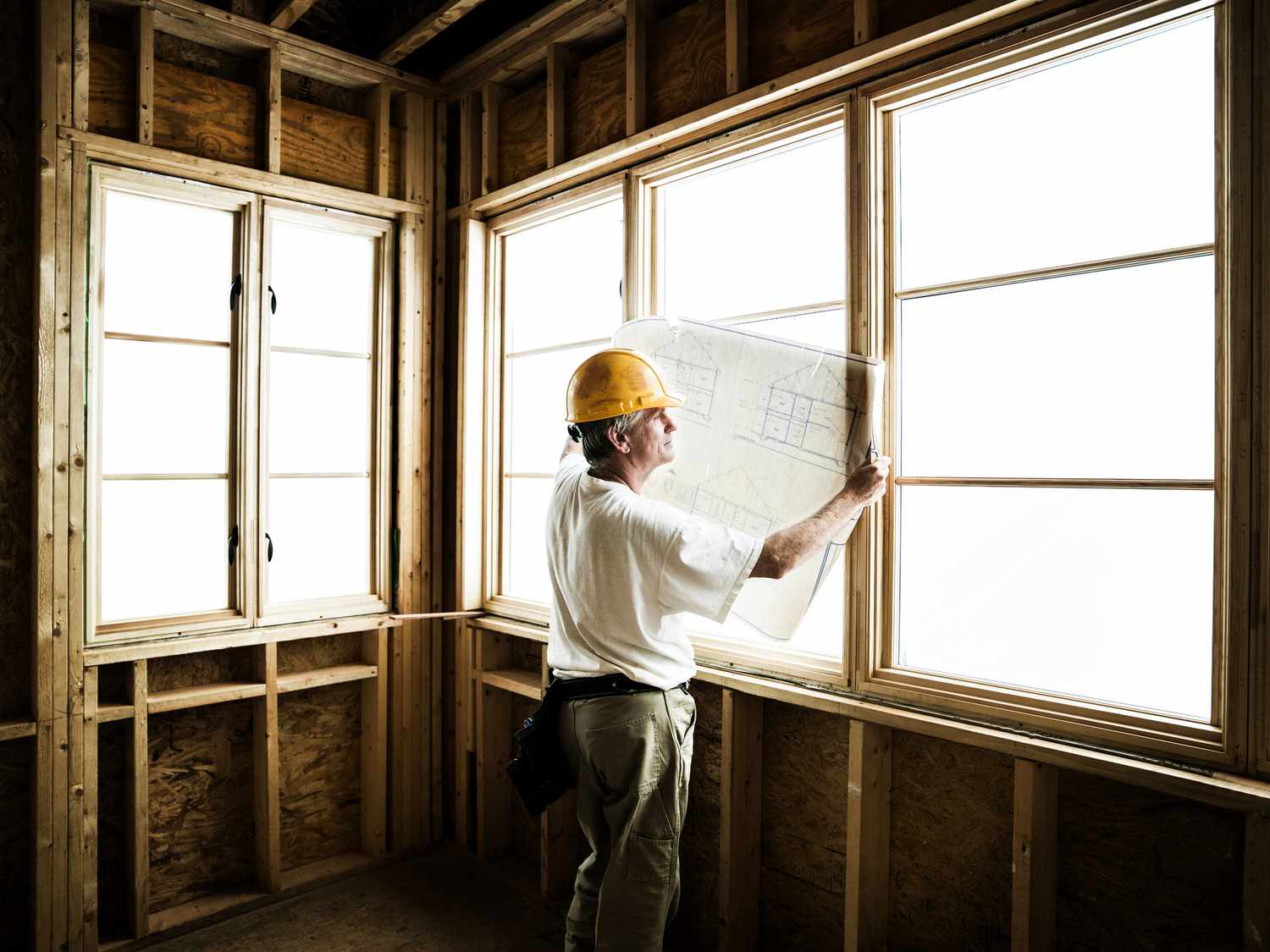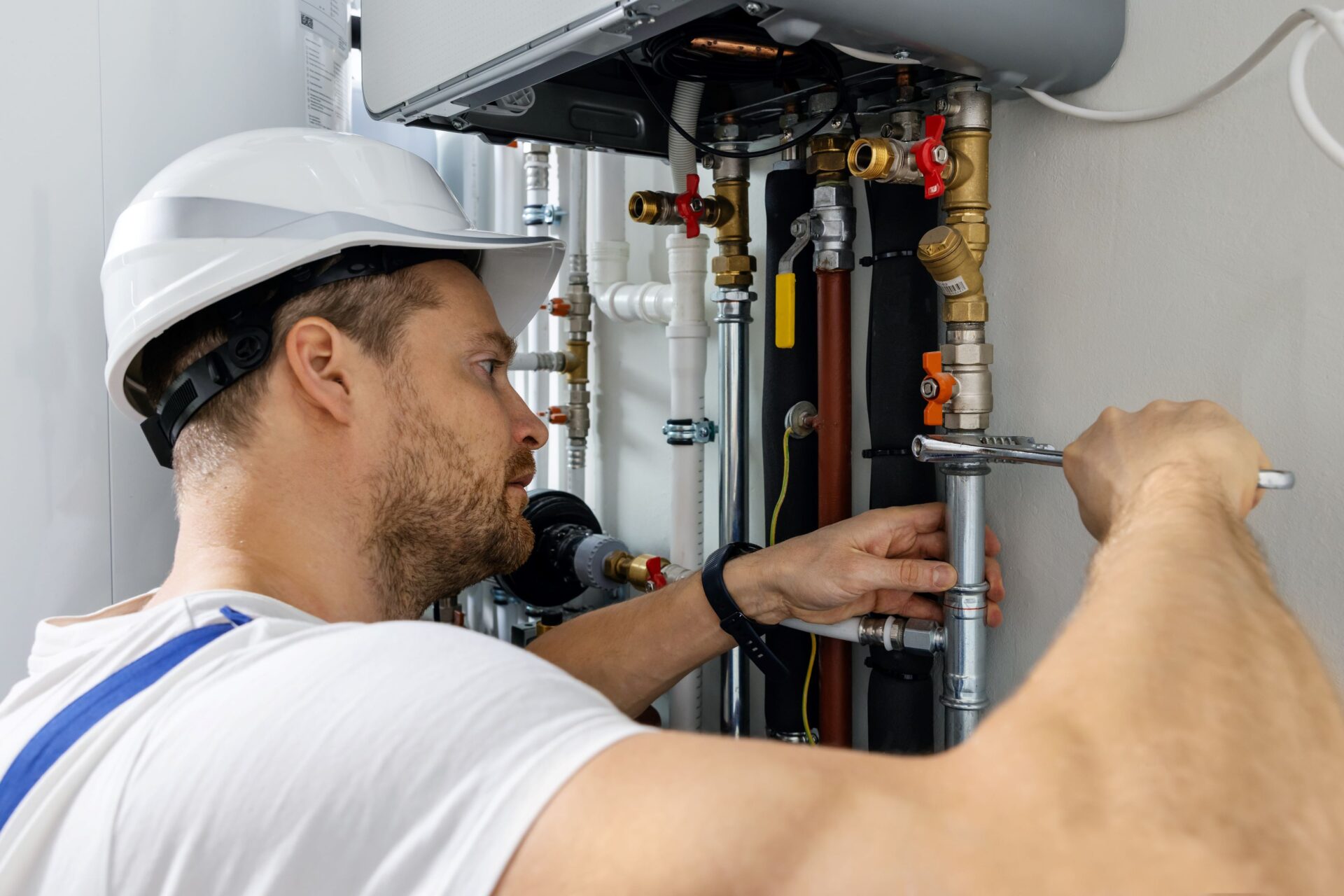Home>Home Maintenance>How To Get A License To Do Home Repair
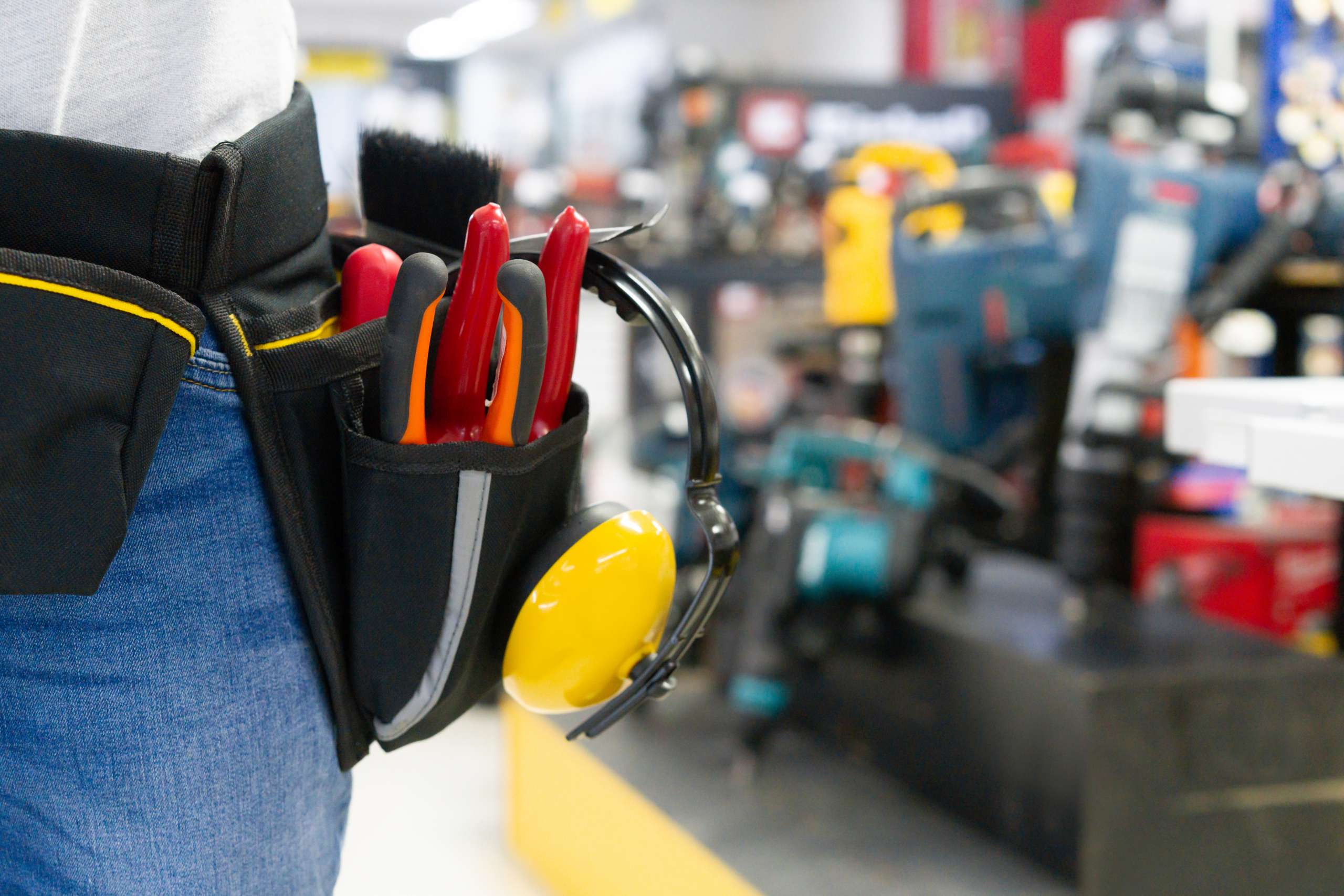

Home Maintenance
How To Get A License To Do Home Repair
Modified: March 6, 2024
Learn how to obtain a license for home repair and maintenance with our easy-to-follow guide. Start your career in home maintenance today.
(Many of the links in this article redirect to a specific reviewed product. Your purchase of these products through affiliate links helps to generate commission for Storables.com, at no extra cost. Learn more)
Introduction
Starting a career in home repair can be a rewarding venture, allowing you to apply your skills and knowledge to improve homeowners’ properties. However, before you can offer your services to the public, it’s essential to obtain a license. A home repair license not only demonstrates your competence and professionalism but also ensures that you comply with the regulations and requirements set by the authorities.
In this comprehensive guide, we will walk you through the process of getting a license to do home repair. Whether you’re a seasoned contractor looking to expand your services or an aspiring handyman starting your own business, this article will provide you with the necessary steps and insights to navigate the licensing procedure.
Before we delve into the specific requirements and steps, it’s important to note that the regulations and licensing requirements can vary from state to state and even among local jurisdictions. It’s crucial to research and familiarize yourself with the laws and guidelines of your specific location.
Now, let’s explore the key aspects of obtaining a license to do home repair, from understanding the regulations to maintaining and renewing your license:
Key Takeaways:
- Getting a home repair license involves understanding local regulations, meeting age and education requirements, passing an exam, and paying fees. It’s crucial to stay updated and comply with renewal procedures to maintain the license.
- Obtaining a home repair license requires thorough research, careful preparation, and ongoing commitment to professionalism. It’s not just about getting the license, but also about continuously improving and staying compliant with regulations.
Read more: How Do You Get A Home Improvement License
Understanding the Regulations and Requirements
Before embarking on the journey to obtain a home repair license, it’s crucial to have a clear understanding of the regulations and requirements that govern this field. These regulations are in place to protect consumers and ensure that only qualified individuals can provide home repair services.
The first step is to research and familiarize yourself with the specific licensing laws in your state and local jurisdiction. Some states may have centralized licensing boards, while others may delegate licensing authority to local municipalities. Understanding the specific regulations will help you determine the exact requirements you need to meet.
In addition to state-level regulations, there may be specific requirements set by local authorities. These requirements can include things like permits, background checks, or additional training. It’s vital to stay informed about any specific regulations that apply to your area.
One of the common requirements for obtaining a home repair license is proving your competence and knowledge in the field. This can be done through various means such as providing documentation of relevant work experience, completing a certain number of training hours, or obtaining a trade certification.
Depending on your location, there may also be minimum age and education requirements to meet. Some states require applicants to be at least 18 years old, while others may have higher age requirements. Similarly, educational qualifications can vary, ranging from a high school diploma to a specific trade qualification.
By understanding the regulations and requirements, you can ensure that you are fully prepared to meet all the necessary criteria for obtaining a home repair license. In the next section, we will dive deeper into the process of researching state and local licensing laws.
Researching State and Local Licensing Laws
When pursuing a home repair license, it’s crucial to research and understand the specific licensing laws that apply to your state and local jurisdiction. This step is essential as it will provide you with a clear roadmap of the requirements and procedures you need to follow.
Start by visiting the website of your state’s licensing board or regulatory agency responsible for home repair licensing. These websites often provide comprehensive information regarding the licensing process, including application forms, fees, and any additional requirements.
Take the time to carefully review all the information available on the website. Look for specific details such as the required documentation, educational qualifications, and any prerequisite experience. Pay close attention to any deadlines or renewal requirements that may be outlined.
Additionally, research the local licensing laws, as there may be additional requirements imposed by the city or county in which you plan to operate. Check with your local government offices or visit their websites to obtain the necessary information.
Engage with industry associations and trade organizations that cater to home repair professionals. These organizations often have valuable resources and information relevant to licensing requirements in your area. They may also offer guidance and support throughout the licensing process.
By conducting thorough research on state and local licensing laws, you will be able to gather all the necessary information to prepare yourself for the licensing application process. In the next section, we will explore the minimum age and education requirements you need to meet to obtain a home repair license.
Meeting the Minimum Age and Education Requirements
Obtaining a home repair license typically involves meeting certain minimum age and education requirements. These requirements are put in place to ensure that individuals have the necessary knowledge and maturity to perform home repair services effectively and responsibly.
The minimum age requirement can vary depending on your state and local jurisdiction. In some areas, you may need to be at least 18 years old to apply for a home repair license. However, there are instances where the minimum age requirement may be higher. It’s crucial to carefully review the licensing laws of your specific location to determine the exact age requirement.
In terms of education, different states have different requirements. Some may only require a high school diploma or its equivalent, while others may require completion of specific courses or trade programs. Research the education requirements outlined by your state’s licensing board to ensure that you meet the necessary qualifications.
If you are lacking the required education, there are options available to fulfill these requirements. Look for community colleges or vocational schools that offer relevant courses or programs in home repair. Completing these educational programs can not only meet the licensing requirements but also enhance your skills and knowledge in the field.
Some states may also accept alternative qualifications, such as demonstrated experience in the industry. If you have extensive experience working in the home repair field but lack formal education, you may be able to provide documentation that proves your competency. This can include client testimonials, work history, or references from previous employers.
It’s important to keep in mind that meeting the minimum age and education requirements is just one aspect of obtaining a home repair license. There are additional steps and requirements you need to fulfill, which we will explore in the subsequent sections. But having a clear understanding of the age and education requirements allows you to prepare yourself for the licensing process.
Completing the Application Process
Once you have gathered all the necessary information and met the minimum age and education requirements, it’s time to start the application process for your home repair license. This step involves preparing and submitting the required documents and forms to the appropriate licensing authority.
Start by downloading or requesting the application form from your state’s licensing board or regulatory agency. Carefully read through the application instructions to ensure that you fill out the form accurately and provide all the necessary information.
Common documents and information required for the application may include:
- Personal identification documents, such as a driver’s license or passport
- Social security number or taxpayer identification number
- Evidence of meeting the minimum age and education requirements
- Proof of relevant work experience or trade certifications
- Financial statements or proof of financial stability
- List of references or recommendations
Take the time to carefully gather all the required documents and ensure that they are complete and accurate. Inaccurate or incomplete applications may lead to delays or even rejection of your license application.
Additionally, some states may require you to undergo a background check or provide evidence of liability insurance coverage. These additional requirements are in place to ensure the safety and protection of consumers.
It’s important to note that the application process may also involve paying an application fee. The fee amount can vary depending on your state and the type of license you are applying for. Be prepared to include the payment along with your application.
Once you have completed the application and assembled all the necessary documents, double-check everything for accuracy and completeness. Review the application form one last time before submitting it to the appropriate licensing authority.
Submitting your application in a timely manner is crucial. Be aware of any deadlines stipulated by your state or local jurisdiction. Late submissions may result in delays or complications in the licensing process.
After submitting your application, it’s important to keep track of its progress. Follow up with the licensing authority to ensure that your application is being processed and inquire about any additional information they may need.
By completing the application process thoroughly and accurately, you increase your chances of a smooth and successful licensing journey. In the next section, we will explore the importance of obtaining liability insurance as part of the licensing requirements.
Read more: How Do You Get An HVAC License
Obtaining Liability Insurance
Obtaining liability insurance is a crucial step in the process of obtaining a home repair license. Liability insurance protects you, your clients, and your business from potential lawsuits and financial liabilities that may arise from accidents or damages that occur during your home repair work.
When working on someone’s property, there’s always the possibility of accidents or unintentional damage. Whether it’s a slip and fall incident or accidental damage to the property, having liability insurance provides you with financial protection and peace of mind.
Before applying for a home repair license, research the insurance requirements set by your state’s licensing board or regulatory agency. They may specify the minimum coverage limits or types of insurance you need to obtain.
Reach out to insurance providers that specialize in liability insurance for home repair professionals. They can guide you through the process of selecting the right coverage for your specific needs.
When selecting liability insurance, consider the following factors:
- General Liability Insurance: This coverage protects you against claims related to bodily injury or property damage that may occur during your work. It typically covers legal fees, medical expenses, and property repair costs.
- Completed Operations Insurance: This coverage protects you from claims that may arise after you have completed a repair or project. It covers damages that occur as a result of your work even after you have completed the job.
- Aggregate and Per Occurrence Limits: Pay attention to the coverage limits specified by the insurance provider. The aggregate limit is the maximum amount the insurance company will pay over a policy period, while the per occurrence limit is the maximum amount they will pay for a single claim.
- Deductible: Consider the deductible amount, which is the out-of-pocket expense you are responsible for before the insurance coverage kicks in.
Obtaining liability insurance not only fulfills a licensing requirement but also demonstrates your commitment to professionalism and protecting your clients’ interests.
Once you have obtained liability insurance, make sure to provide proof of coverage to the licensing authority as part of your application process. Keep a copy of the insurance documents for your own records, and ensure that the coverage stays active and up-to-date throughout your home repair career.
In the next section, we will explore the steps you can take to prepare for the licensing exam.
Preparing for the Licensing Exam
As part of the home repair licensing process, you may be required to pass a licensing exam to demonstrate your knowledge and competency in the field. The exam aims to ensure that licensed professionals have a strong understanding of various aspects of home repair and are capable of delivering quality services to clients.
To increase your chances of success on the licensing exam, it’s important to dedicate time and effort to proper preparation. Here are some steps you can take to effectively prepare for the exam:
1. Familiarize Yourself with the Exam Format:
Start by obtaining detailed information about the exam format and structure. Check with your state’s licensing board or regulatory agency to understand the types of questions, time limits, and passing criteria for the exam.
2. Obtain Study Materials:
Look for study materials that cover the topics and concepts that may be included in the exam. These resources can include textbooks, online courses, practice exams, and study guides specifically tailored for home repair licensing exams.
3. Create a Study Plan:
Develop a study plan that outlines the topics you need to cover and how much time you will allocate to each one. Establish a study schedule that fits your lifestyle and allows for consistent and focused study sessions.
4. Review the Exam Content Areas:
Identify the core content areas that will be covered in the exam. These may include topics such as construction methods, safety regulations, building codes, electrical systems, plumbing, and more. Make sure to review and understand the key concepts within each content area.
5. Practice with Mock Exams:
Take advantage of practice exams to familiarize yourself with the types of questions and the time pressure you may face during the actual exam. Analyze your performance on these practice exams to identify areas where you need to improve and focus your study efforts accordingly.
6. Seek Additional Resources:
Consider joining study groups or online forums where you can connect with other individuals preparing for the same exam. Exchange study materials, ask questions, and benefit from the collective knowledge and support of fellow exam takers.
7. Take Care of Yourself:
Don’t forget to take care of your physical and mental well-being during the exam preparation process. Get enough rest, eat healthily, and take breaks when needed. Maintaining a balanced lifestyle will help you stay focused and perform better during the exam.
By following these steps and dedicating ample time and effort to your exam preparation, you can increase your confidence and readiness for the licensing exam. In the next section, we will explore the process of actually taking the licensing exam.
Taking the Licensing Exam
After thorough preparation, it’s time to sit for the licensing exam. This exam is designed to assess your knowledge and proficiency in various aspects of home repair. Taking the exam can be a nerve-wracking experience, but with the right mindset and preparation, you can increase your chances of success.
1. Review Exam Logistics:
Prior to the exam day, make sure you are familiar with the logistics of the exam. Know the location, date, and time of the exam, as well as any specific instructions provided by the licensing board or regulatory agency. Arrive early to the exam venue to avoid any unnecessary stress.
2. Bring Required Materials:
Check if there are any materials or documents you need to bring with you to the exam. This may include identification documents, exam admission tickets, calculators, or other specific materials as outlined in the exam instructions. Double-check that you have everything you need before leaving for the exam.
Read more: How To Get A Home Improvement License In NJ
3. Stay Calm and Focused:
Approach the exam with a calm and focused mindset. Take deep breaths and remind yourself of the preparation you have done. Trust in your abilities and try to stay relaxed during the exam. Manage your time effectively to ensure you have ample time to answer each question.
4. Read Carefully and Understand the Questions:
When faced with each question, read it carefully and make sure you understand what is being asked. Take your time to analyze the question and consider all the options before selecting your answer. Pay attention to keywords or phrases that may provide clues or context for the correct response.
5. Answer with Confidence:
Once you have understood the question, answer it with confidence. Trust your knowledge and instincts. Be cautious of overthinking or second-guessing your answers, as this can lead to unnecessary confusion. If you’re unsure about a particular question, make an educated guess and move on to the next one.
6. Manage Your Time:
Time management is crucial during the exam. Allocate your time wisely, ensuring you have sufficient time to answer all the questions. If you come across a particularly challenging question, consider leaving it and returning to it later if time permits. Prioritize completing all the questions within the given time frame.
7. Review Your Answers:
If time allows, go back and review your answers before submitting the exam. Double-check for any errors or misinterpretations. However, avoid making unnecessary changes unless you are confident that your initial response was incorrect.
8. Stay Positive:
Remember to stay positive throughout the exam. Even if you encounter difficult questions, maintain a positive mindset and do your best. Trust in the knowledge and preparation you have acquired leading up to the exam.
After completing the exam, submit your answers according to the instructions provided. Now, all that is left to do is wait for the exam results. In the next section, we will explore the process of paying the license fees.
Paying the License Fees
Once you have successfully completed the licensing exam and received confirmation of passing, the next step in the process is to pay the required license fees. Paying the license fees is an essential part of finalizing the licensing process and officially obtaining your home repair license.
1. Determine the License Fee Amount:
Before submitting your payment, find out the specific amount of the license fee associated with your state and the type of license you are applying for. This information is typically available on your state’s licensing board website or in the licensing application materials.
2. Payment Methods:
Check the acceptable methods of payment for the license fees. Some licensing boards may accept online payments, credit or debit cards, personal checks, or money orders. Ensure that you have the required payment method available.
3. Paying the Fee:
Follow the instructions provided by the licensing board regarding the payment of fees. If an online payment option is available, navigate to the designated payment portal and follow the steps to complete the transaction securely. If payment is required by mail, make the necessary arrangements to send your payment to the specified address.
4. Obtain Proof of Payment:
Once you have made the payment, it’s important to retain proof of payment for your records. Keep a copy of the transaction receipt, confirmation email, or any other documentation that serves as proof of payment. This will be useful in case of any discrepancies or future reference.
5. Confirm Receipt of Payment:
After submitting your payment, check if you receive any confirmation or acknowledgment from the licensing board. This can be in the form of a payment receipt, an email confirmation, or a notice on your online application portal. Make sure to retain this confirmation as evidence of your payment.
6. Allow Processing Time:
Be aware that it may take some time for the licensing board to process your payment and update your license status. The duration can vary depending on the workload of the licensing board and the specific procedures in place. Exercise patience and regularly check for updates on your license status.
7. Keep Copies of Documentation:
Throughout the payment process, it’s essential to keep copies of all relevant documentation, including the license application forms, fee receipts, and any communication with the licensing board. These documents will serve as proof of your compliance with the payment requirements.
By paying the required license fees promptly and keeping proper documentation, you ensure that your licensing application is complete and processed in a timely manner. In the next section, we will explore the importance of registering your license with the appropriate authorities.
Registering Your License with the Appropriate Authorities
After successfully obtaining your home repair license and paying the required fees, the final step is to register your license with the appropriate authorities. Registering your license ensures that you are officially recognized as a licensed home repair professional and allows you to legally operate your business.
1. Understand the Registration Process:
Research the specific registration process outlined by your state’s licensing board or regulatory agency. This may involve submitting additional documentation, completing registration forms, or following specific instructions provided by the licensing authority.
Read more: How To Get A License For Landscaping
2. Gather Required Documents:
Review the documentation requirements for registration. This can include a copy of your license certificate, identification documents, proof of liability insurance, and any other documentation specified by the licensing board. Ensure that you have all the necessary documents ready for submission.
3. Complete Registration Forms:
Fill out the required registration forms accurately and completely. Take the time to double-check the information you provide, ensuring that there are no errors or omissions. Follow any instructions provided regarding the submission of the registration forms.
4. Submit Registration Documents:
After completing the registration forms and gathering the required documents, submit them to the appropriate authorities. This may involve mailing the documents, using an online registration portal, or visiting a physical office location. Make sure to follow the instructions provided by the licensing board.
5. Pay Any Additional Fees:
Some states may require an additional registration fee to process and approve your license registration. If there are any additional fees specified, make sure to pay them promptly and provide proof of payment along with your registration documents.
Read more: How To Get Interior Design License
6. Await Confirmation:
Once the registration documents and fees have been submitted, it may take some time for the licensing board to process your registration. Be patient and monitor the status of your registration. Follow up with the licensing board if necessary to inquire about the progress of your registration.
7. Display Your License:
Upon receiving confirmation of your license registration, you are now officially registered to operate as a licensed home repair professional. Display your license certificate in your place of business or carry it with you when offering your services to clients. This demonstrates your legitimacy and professionalism to potential clients.
Registering your license is a crucial step in becoming an authorized home repair professional. It ensures that you comply with all legal requirements and allows you to confidently offer your services to clients. In the next section, we will explore the importance of maintaining and renewing your home repair license.
Maintaining and Renewing Your License
Once you have obtained your home repair license and started working as a licensed professional, it’s important to understand the requirements for maintaining and renewing your license. Keeping your license active demonstrates your commitment to professionalism and compliance with the regulations set by the licensing board or regulatory agency. Here are key steps to help you maintain and renew your license:
1. Familiarize Yourself with Renewal Periods:
Research the renewal periods and timelines specified by your state’s licensing board. Typically, home repair licenses need to be renewed every few years. Understand the specific renewal requirements and ensure you are aware of the renewal deadline to avoid any lapses in your licensure.
Read more: What Do I Need To Get A Construction License
2. Stay Updated on Continuing Education Requirements:
Many states require licensed professionals to fulfill continuing education requirements as part of the renewal process. Research and understand the specific continuing education requirements for your license. Identify approved courses or training programs that will help you meet these requirements and stay updated in your field.
3. Complete Renewal Application:
As the renewal period approaches, complete the renewal application provided by the licensing board. Fill out the application accurately and provide any required information or documentation. Pay attention to any additional requirements or fees specified for the renewal process.
4. Submit Renewal Application and Fee:
Submit your completed renewal application along with any required fees to the licensing board within the designated renewal period. Be mindful of any specific submission guidelines or payment methods outlined by the licensing board. Retain a copy of the application and proof of payment for your records.
5. Fulfill Continuing Education Requirements:
If there are continuing education requirements for license renewal, make sure to complete the necessary courses within the specified timeframe. Keep records of your course completion certificates or other documentation as proof of meeting the continuing education requirements.
Read more: How Do I Get My Journeyman Plumbing License
6. Stay Compliant with Regulations:
Adhere to all regulations and guidelines outlined by the licensing board throughout the term of your license. This includes maintaining liability insurance coverage, adhering to safety regulations, and complying with any other licensing requirements.
7. Keep Track of Renewal Deadlines:
Stay organized and keep track of the renewal deadlines for your license. Set reminders or utilize calendar tools to ensure you stay on top of the renewal process. Failing to renew your license on time can result in penalties, fines, or the suspension of your license.
8. Display Your Renewed License:
Once your license has been successfully renewed, display your updated license certificate in your place of business or carry it with you when offering your services to clients. This demonstrates your continued compliance with regulations and assures clients of your valid and up-to-date credentials.
By effectively maintaining and renewing your home repair license, you can continue to operate as a licensed professional, providing quality services to clients while adhering to legal requirements. Regularly review the renewal process and stay informed about any updates or changes to licensing regulations.
Conclusion
Obtaining a license to work as a home repair professional is an important step in establishing yourself as a qualified and reputable expert in the field. It not only demonstrates your competence and professionalism but also ensures that you comply with the regulations and requirements set by the licensing authorities. Throughout this comprehensive guide, we have explored the key steps involved in getting a license to do home repair.
We began by emphasizing the importance of understanding the regulations and requirements specific to your state and local jurisdiction. It is crucial to conduct thorough research and familiarize yourself with the laws and guidelines that govern home repair licensing in your area.
From there, we explored various aspects, such as meeting the minimum age and education requirements, completing the application process, obtaining liability insurance, preparing for the licensing exam, paying the license fees, and registering your license with the appropriate authorities. Each of these steps is integral in ensuring a smooth and successful licensing journey.
Furthermore, we discussed the significance of maintaining and renewing your license to stay compliant with regulations and demonstrate your ongoing commitment to professionalism. This involves fulfilling continuing education requirements, submitting renewal applications and fees, and staying updated on any changes or deadlines set by the licensing board.
By following these steps and dedicating time and effort to the licensing process, you can establish yourself as a licensed home repair professional, gaining the trust and confidence of clients who seek your services. Remember to stay informed about any changes in regulations, seek support from industry associations, and continuously expand your knowledge and skills in the field.
Having a home repair license not only provides credibility and assurance to clients, but it also opens doors to opportunities for professional growth and success. As you embark on your journey, remember that obtaining a license is just the beginning. It’s the continuous pursuit of excellence and a commitment to lifelong learning and improvement that will set you apart in the ever-evolving home repair industry.
So, take the knowledge and insights gained from this guide, apply them to your specific location, and embark on a successful journey as a licensed home repair professional!
Frequently Asked Questions about How To Get A License To Do Home Repair
Was this page helpful?
At Storables.com, we guarantee accurate and reliable information. Our content, validated by Expert Board Contributors, is crafted following stringent Editorial Policies. We're committed to providing you with well-researched, expert-backed insights for all your informational needs.
